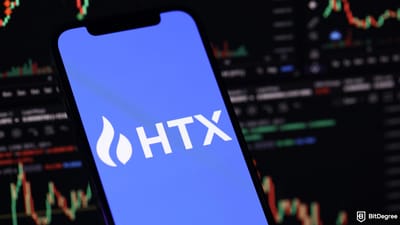Ace quick missions & earn crypto rewards while gaining real-world Web3 skills. Participate Now! 🔥
Are you interested in the Proof of Work VS Proof of Stake argument? Or maybe you just want to know a little more about the process of how to mine Ethereum, Bitcoin, Dash and other popular blockchains that use Proof of Work? Either way, you've come to the right place.
Both of these models are called 'consensus mechanisms', and they are a current requirement to confirm transactions that take place on a blockchain, without the need for a third party. We'll get more into this soon though.
Anyway, in this Proof of Work VS Proof of Stake guide, I am going to start by explaining the basics of each model, followed by which popular blockchains have adopted them.
Following that, I am then going to give a really simple explanation about how the technology works and how they allow people to earn extra cryptocurrency by becoming a miner!
Finally, I will then explain why I believe Proof of Stake is a much better model than Proof of Work, as well as giving some real-world examples of each model.
By the end of reading my guide from start to finish, you will be able to comfortably explain to your friends what each consensus mechanism is, how they work and which one is better!
NOTE! It's always crucial to keep your cryptocurrencies in secure wallets, such as Ledger Nano X, Ledger Nano S Plus, or Trezor Model T. Also, if you decide to exchange your cryptocurrencies, you should choose reliable crypto exchanges. Binance, Kraken, Coinbase, and KuCoin are among the most popular and reliable options.

|

|
|
|---|---|---|
| Advanced Users & Beginners | Best for Buying & Selling Crypto with Small Fees | |
| Turkey, Argentina, Vietnam, Ukraine, + 180 more | United Kingdom, India, Russia, Mexico, + 150 more | |
| See All Coupons of Best Exchanges | See All Coupons of Best Exchanges | |
| One of the leading crypto exchange platforms in the industry. | A reliable and well-established cryptocurrency exchange platform. | |
|
See TOP10 Brands
Read review |
See TOP10 Brands
Read review |
Table: Binance and KuCoin comparison
So, what are you waiting for? Let's start with the basics.

Did you know?
Subscribe - We publish new crypto explainer videos every week!
Non-custodial Wallet: Why Do You Need It Right NOW


Table of Contents
- 1. Proof of Stake VS Proof of Work: The Basics
- 2. PoW Adoption VS PoS Adoption
- 3. Proof of Work: How are Transactions Verified?
- 4. Proof of Stake: How are Transactions Verified?
- 5. Why is Proof of Stake better than Proof of Work?
- 5.1. Centralization
- 5.2. Electricity Consumption
- 5.3. 51% Attack
- 6. Disadvantages of the Proof of Stake Model?
- 7. Proof of Work VS Proof of Stake: The Conclusion
Proof of Stake VS Proof of Work: The Basics
When Satoshi Nakamoto was building the first-ever cryptocurrency, Bitcoin, he had to find a way for transactions to be verified without the need to use a third party. This he achieved when he created the Proof of Work system.
Latest Deal Active Right Now:Score up to $200 in BTC or USD – just sign up and make your first crypto purchase to get a go at the Reward Wheel. Instant spin. Instant reward. Follow this Coinbase referral link to activate the deal!
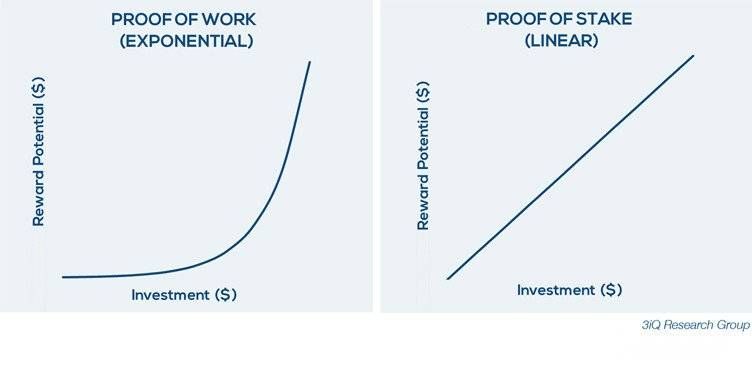
Essentially, Proof of Work is used to determine how the blockchain reaches consensus. In other words, how can the network be sure that the transaction is valid and that someone isn’t trying to do bad things, such as spend the same funds twice?
Although I will explain it in more detail later on, Proof of Work is based on an advanced form of mathematics called 'cryptography'. This is why digital coins like Bitcoin and Ethereum and called 'cryptocurrencies'!
Cryptography uses mathematical equations that are so difficult that only powerful computers can solve them. No equation is ever the same, meaning that once it is solved, the network knows that the transaction is authentic.
Lots of other blockchains copied the original Bitcoin code and as such, also use the Proof of Work model. Although Proof of Work is an amazing invention, it is anything but perfect. Not only does it need significant amounts of electricity, but it is also very limited in the number of transactions it can process at the same time.
As a result, other consensus mechanisms have been created, with one of the most popular being the Proof of Stake model. Proof of Stake was first created in 2012 by two developers called Scott Nadal and Sunny King. At the time of its launch, the founders argued that Bitcoin and its Proof of Work model required the equivalent of $150,000 in daily electricity costs.
Since then, this figure has increased to millions of dollars, which I will discuss in more detail further down this article.
Anyway, the first-ever blockchain project to use the Proof of Stake model was Peercoin. The initial benefits include a fairer and more equal mining system, more scalable transactions and less reliance on electricity.
As a result, the world’s second most popular cryptocurrency – Ethereum, is in the process of attempting to move from Proof of Work to Proof of Stake. The Ethereum Proof of Stake date is yet to be confirmed, however, the team is working hard to get there as quickly as possible.
So, now that you know the basics, the next part of my 'Proof of Work VS Proof of Stake' guide is going to look at which blockchains have adopted each of the two models!
PoW Adoption VS PoS Adoption
The most obvious starting point is to discuss the original adopter of Proof of Work, which is the Bitcoin blockchain. Every time a transaction is sent, it takes about 10 minutes for the network to confirm it. Furthermore, the Bitcoin blockchain can only handle about 7 transactions per second.
This has led to transaction fees increasing significantly from when the project first started in 2009. For example, Bitcoin fees initially cost a very small fraction of a cent, which made the network useful for transferring small amounts. However, as you will see from the chart below, this increased to as much as $40 per transaction during its busiest period in December 2017!
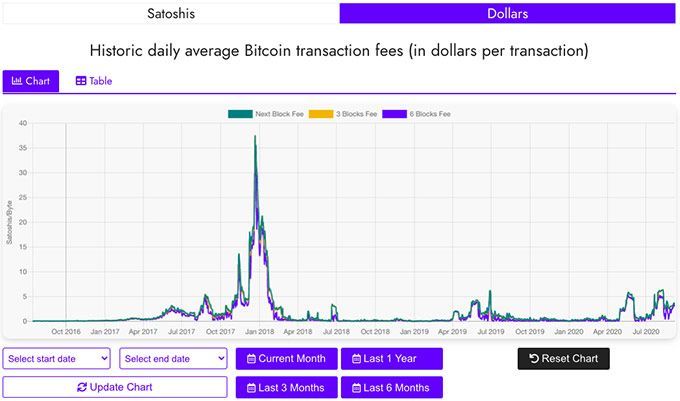
Source: privacypros.io
Although these fees have since been reduced, they are still too high to make it suitable as a global payment system. Most of these issues are mainly due to the limits of Proof of Work.
The second most popular cryptocurrency in the world, Ethereum also uses Proof of Work. Interestingly, the developers made a few changes to the original code, which allowed the network to process transactions in just 16 seconds. Although this isn’t the fastest in the industry, it is significantly quicker than the 10 minutes it takes Bitcoin.
Nevertheless, the scalability issues that Proof of Work has caused Bitcoin is also a problem for Ethereum. The maximum amount of transactions that the Ethereum blockchain can process is 15, which again, is substantially lower than the network needs. However, although the Ethereum Proof of Stake date isn’t yet official, it is hoped that it will increase this number to thousands per second.
Just like Ethereum, other blockchains sometimes use a variation of Proof of Work by changing the type of algorithm which supports the transaction validation process. Other popular blockchains that have installed Proof of Work include Bitcoin Cash and Litecoin.
SECURE $600 BONUS
Exclusive Binance Reward
Sign up on Binance and claim up to $600 worth of rewards for completing simple tasks. Use Binance referral code (49316610) to activate the offer while it's still valid!
On the other hand, some really popular cryptocurrencies now use Proof of Stake. One of these is Dash, which allows users to send and receive funds in just a couple of seconds.
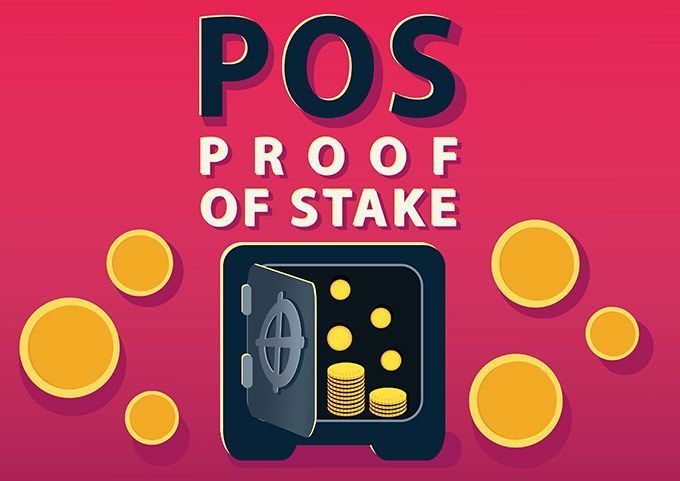
Another well-known blockchain that uses the Proof of Stake model is NEO. The Chinese smart contract protocol has had an amazing journey since it was first launched in 2016, increasing the value of its coin by more than 100,000%!
So, now that you know which popular blockchains use Proof of Work and which use Proof of Stake, the next part of my 'Proof of Work VS Proof of Stake' guide is going to look at how transactions are verified. Let’s start with Proof of Work!
Proof of Work: How are Transactions Verified?
As you can imagine, thousands of people use Bitcoin, Ethereum and other blockchains that use the Proof of Work model. In my example below, I am going to use Bitcoin, however, the process is the same across alternative Proof of Work blockchains.
I mentioned earlier that Bitcoin transactions take 10 minutes before they are confirmed as valid. Well, in each 10-minute interval, something called a new "block" is created.
Every block contains different transactions within it, which must each be independently verified. For the Bitcoin network to achieve this without a third party, somebody must use their computational power to solve a cryptographic algorithm, otherwise known as Proof of Work.
Once this is achieved, not only is the transaction marked as valid, but it is also posted to the public blockchain for everybody to view. You might be wondering why somebody would buy hardware and consume lots of electricity just to help confirm Bitcoin transactions.
Well, the simple answer is that people are rewarded with additional Bitcoin (or whichever cryptocurrency Proof of Work is confirming) for their efforts. The important thing to understand is that not everybody gets a reward. Thousands of individual devices all compete to become the first to solve the cryptographic algorithm. Whoever gets there first, wins the reward.
I’ll talk about this in more detail later on, but one of the major issues with Proof of Work is that it is not a fair system, because those with the most powerful and expensive hardware devices will always have the greatest chance of winning the reward.
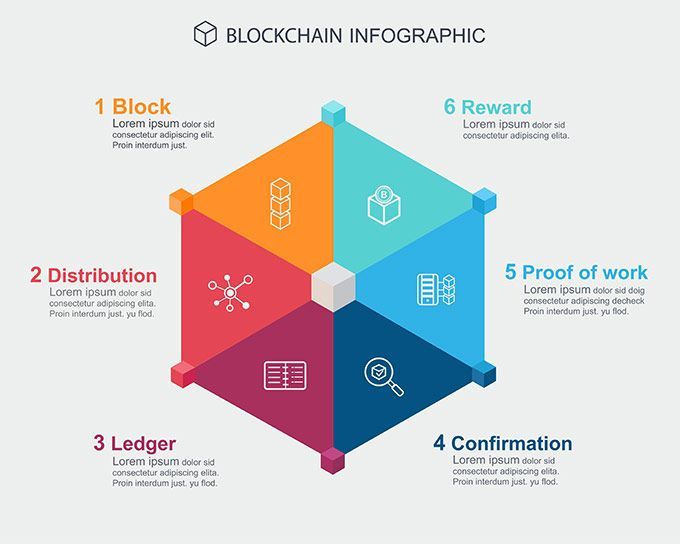
Moving on, because of the way that the cryptographic puzzle is created, the only way that it can be solved is by using trial or error. Although I have simplified it significantly, take a look at the following example:
1. The Proof of Work mathematical sum = 5+7
2. The answer is 12.
3. Whoever gets the answer first, wins the mining reward.
4. Miner 1 and Miner 2 compete with each other, with the results displayed below.
Miner 1
Attempt 1: 5+7 = 10 *Incorrect*
Attempt 2: 5+7 = 13 *Incorrect*
Attempt 3: 5+7 = 9 *Incorrect*
Miner 2
Attempt 1: 5+7 = 17 *Incorrect*
Attempt 2: 5+7 = 8 *Incorrect*
Attempt 3: 5+7 = 12 *Correct*
As you can see from the above example, it was Miner 2 that guessed the correct answer on the third attempt. That means that they would have been the miner to get the mining reward! In the real world, computers can guess millions of different combinations per second, which requires such a large amount of electricity.
Generally speaking, the more powerful the hardware is, or the more hardware devices you have, the more chance you have of solving the puzzle first. I’ll talk about this in more detail shortly, but for these reasons, it is not a fair system.
Before I move on to Proof of Stake, I just wanted to make it clear that although the above example is similar across most Proof of Work models, some blockchains use a slightly different process. However, let's just keep things simple, shall we?
Anyway, now you know briefly how mining Ethereum, Bitcoin and other Proof of Work blockchains operate, the next part of my 'Proof of Work VS Proof of Stake' guide is going to find out how Proof of Work works.
Proof of Stake: How are Transactions Verified?
The Proof of Stake model uses a different process to confirm transactions and reach consensus. The system still uses a cryptographic algorithm, but the objective of the mechanism is different.
While Proof of Work rewards its miner for solving complex equations, in Proof of Stake, the individual that creates the next block is based on how much they have 'staked'. To make things simple for you, the stake is based on the number of coins the person has for the particular blockchain they are attempting to mine.
However, technically speaking, individuals aren’t mining. Instead, they are called 'forgers', because there is no block reward. While Bitcoin, which uses the Proof of Work model, awards a block reward every time a new block is verified, those who contribute to the Proof of Stake system simply earn the transaction fee.

Anyway, let’s find out how the 'forger' would attempt to successfully verify the transaction...
Firstly, to have the opportunity to validate transactions, the user must put their coins into a specific wallet. This wallet freezes the coins, meaning that they are being used to stake the network. Most Proofs of Stake blockchains have a minimum requirement of coins required to start staking, which of course requires a large upfront investment.
For example, to validate transactions for the Dash network, you would be required to stake and freeze a minimum of 1,000 Dash coins. During the cryptocurrency’s all-time high in December 2017, where Dash reached more than $1,500 a coin, it would have cost the real-world equivalent of $1.5 million.
Nevertheless, assuming you have staked the required minimum, your chances of winning the reward (transaction fees) is linked to the total percentage of coins you hold. Take a look at the following example.
1. You decide you want to stake coins to earn some Proof of stake rewards.
2. The blockchain has a total of 1000 coins in circulation.
3. Your purchase and stake 100 coins.
4. This means you have staked 10% of the total coins in circulation.
5. You now have a 10% chance of winning every reward.
So, to clarify:
- Proof of Work requires ALL of its miners to attempt to solve a complex sum, with the winner determined by the person who has the most powerful/quantity of hardware devices.
- Proof of Stake model randomly chooses the winner based on the amount they have staked.
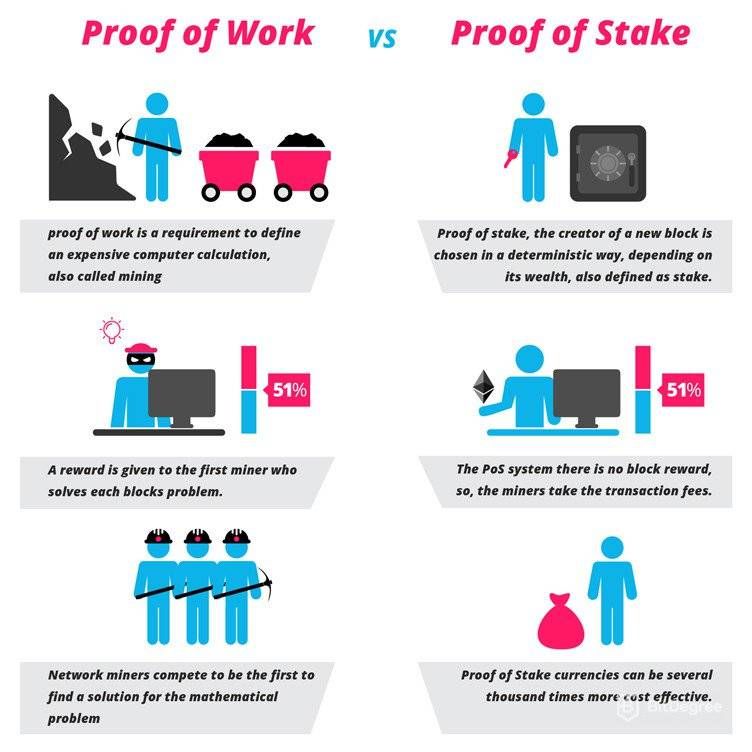 Source: blockgeeks
Source: blockgeeks
The most important theory supporting the Proof of Stake consensus mechanism is that those who stake are going to want to help keep the network secure by doing things correctly. If a forger attempted to hack the network or process malicious transactions, then they would lose their entire stake.
This is why the model works so well. The more you stake, the more you earn. But at the same time, the more you lose if you go against the system.
So, now that you know how each consensus mechanism confirms and validates transactions, the next part of my Proof of Work VS Proof of Stake guide will explain why I believe the Proof of Stake model is much better than Proof of Work!
| DON'T FORGET! If you own cryptocurrencies, make sure to get a secure and trusted hardware wallet for storing them. Don't know where to start? Check out Ledger Nano X and Trezor Model T, they're known as the top-rated cold wallets. |
Why is Proof of Stake better than Proof of Work?
I believe that the Proof of Stake model is a much better model than Proof of Work because it solves lots of issues, which I will now break down for you.
Centralization
If you have read my Proof of Work VS Proof of Stake guide up to this point, you might remember that I said Proof of Work blockchains give people who purchase powerful hardware devices a greater chance of winning the mining reward.
What this has resulted in is centralized organizations buying thousands of devices (known as ASIC’s) which generate the highest mining power. This type of operation is known as a 'mining pool' and it allows people to 'pool' their resources together to give them the greatest chance of solving the cryptographic sum first.
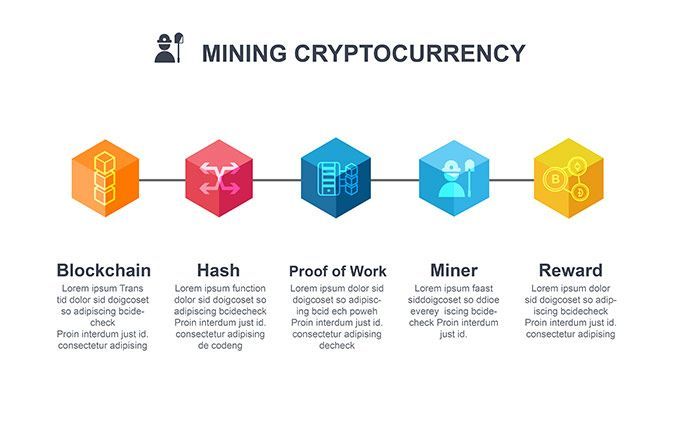
Consequently, just four mining pools (of which the majority are located in China where electricity is cheap) control more than 50% of the total Bitcoin mining power.
This is an unfair system as it means that the average person has no chance of ever winning the mining reward. This is where Proof of Stake is different. This model prevents groups of people joining forces to dominate the network just to make a profit. Instead, those who contribute to the network by freezing their coins are rewarded proportionately to the amount they have invested.
The next example in this 'Proof of Work VS Proof of Stake' guide is going to discuss electricity consumption.
Electricity Consumption
I mentioned earlier in my Proof of Work VS Proof of Stake guide that some Proof of Work blockchains like Bitcoin use large amounts of electricity. This is because the cryptographic sum that miners must solve is incredibly difficult.
A recent study found that the total amount of electricity required to keep the Bitcoin network functional is more than the amount used by more than 159 individual countries!
Not only is this bad for the environment, but it also slows down the rate at which cryptocurrencies can increase their real-world adoption. This is because electricity bills must be paid using fiat currency!
On the other hand, Proof of Stake does not need highly complex sums to be solved, meaning that the electricity costs to verify transactions are substantially lower.
51% Attack
A 51% attack is used to describe the unfortunate event that a group or single person gains more than 50% of the total mining power. If that happened in a Proof of Work blockchain like Bitcoin, it would allow the person to make changes to a particular block. If this person was a criminal, they could alter the block for their gain.
A recent example of a 51% attack happened against the Verge blockchain, which allowed the hacker to walk away with 35 million XVG coins. At the time of the attack, this amounted to a real-world value of $1.75 million!
When using a Proof of Stake consensus mechanism, it would not make financial sense to attempt to perform a 51% attack. For this to be achieved, the bad actor would need to stake at least 51% of the total amount of cryptocurrency in circulation. The only way they could do this is to purchase the coins on the open market.
If they decided to buy an amount this substantial, then the real-world value of the coin would increase along the way. As a result, they would end up spending significantly more than they could gain from the attack. Not only this but once the rest of the network had realized what had happened, the bad actor would lose all of their stakes!
So, now that you know the issues of Proof of Work and how Proof of Stake solves them, the final part of my Proof of Work vs Proof of Stake guide is going to discuss whether there are any disadvantages to using Proof of Stake!
Disadvantages of the Proof of Stake Model?
The first concern when discussing Proof of Stake VS Proof of Work is the issue that some people have about Proof of Stake helping the rich get richer. This is because the more coins you can afford to buy, the more coins you can stake and earn.
Think of it like this. If you had enough money to meet the minimum staking requirement (which most people don’t) then you can guarantee yourself a very good return on your investment. Those who have the most money will always have the best chance of winning the reward, making the rich richer.
However, this is almost no different from the Proof of Work consensus mechanism, whereby wealthy miners can simply purchase thousands of ASIC devices.
The second concern that some people have about Proof of Stake is that it allows people to verify transactions on multiple chains, which Proof of Work doesn’t. The reason this could be an issue is that it might allow a hacker to perform a double-spend attack.
This is when somebody transfers funds to somebody else, but before the transaction is confirmed, they manage to spend the funds again. Under normal circumstances, such an attempt would be prevented when all of the other miners on the network see it. Furthermore, because Proof of Work only allows devices to mine on one chain, the dishonest chain would simply be rejected.
On the other hand, in a Proof of Stake model, it doesn't cost forgers any money to mine on multiple chains, possibly allowing somebody to successfully perform a double-spend. Which is otherwise known as the "'nothing at stake' problem?
In reality, the Proof of Stake VS Proof of Work argument is something that will always divide people’s opinions. However, seeing as though the original way of how to mine Ethereum is going to be changed, it's clear to see which mechanism is the most favored.
Proof of Work VS Proof of Stake: The Conclusion
That’s the end of my Proof of Work VS Proof of Stake guide! If you have read it from start to finish, you should now have a good understanding of how each consensus mechanism works, and how they differ from one another.
Proof of Work is the current way how to mine Ethereum, Bitcoin, Dash, and some other cryptocurrencies. However, you should now be fully aware of the many issues associated with Proof of Work. This includes the amount of electricity it requires, the centralization of power that mining pools now have, and the threats of a 51% attack.
I have also listed some of the solutions that the Proof of Stake model brings to the cryptocurrency industry. However, as blockchain technology becomes more advanced, lots of other consensus algorithms are hitting the market, all with their pros and cons.
Now, if you managed to mine yourself a good amount of cryptocurrencies, you should make sure to keep them in secure wallets. Ledger Nano X and Trezor Model T are among the most recommended options. Also, if you decide to exchange them to other coins, choose reliable crypto exchanges, such as KuCoin, Coinbase, Kraken and Binance.

|

|
|
|---|---|---|
| 24-word seed phrase or Nano S Plus | 12-, 20-, and 24-word seed phrase | |
| You | You | |
|
Visit site
Read review |
See TOP10 Brands
Read review |
Table: Ledger Nano X and Trezor Model T security comparison.
The content published on this website is not aimed to give any kind of financial, investment, trading, or any other form of advice. BitDegree.org does not endorse or suggest you to buy, sell or hold any kind of cryptocurrency. Before making financial investment decisions, do consult your financial advisor.






